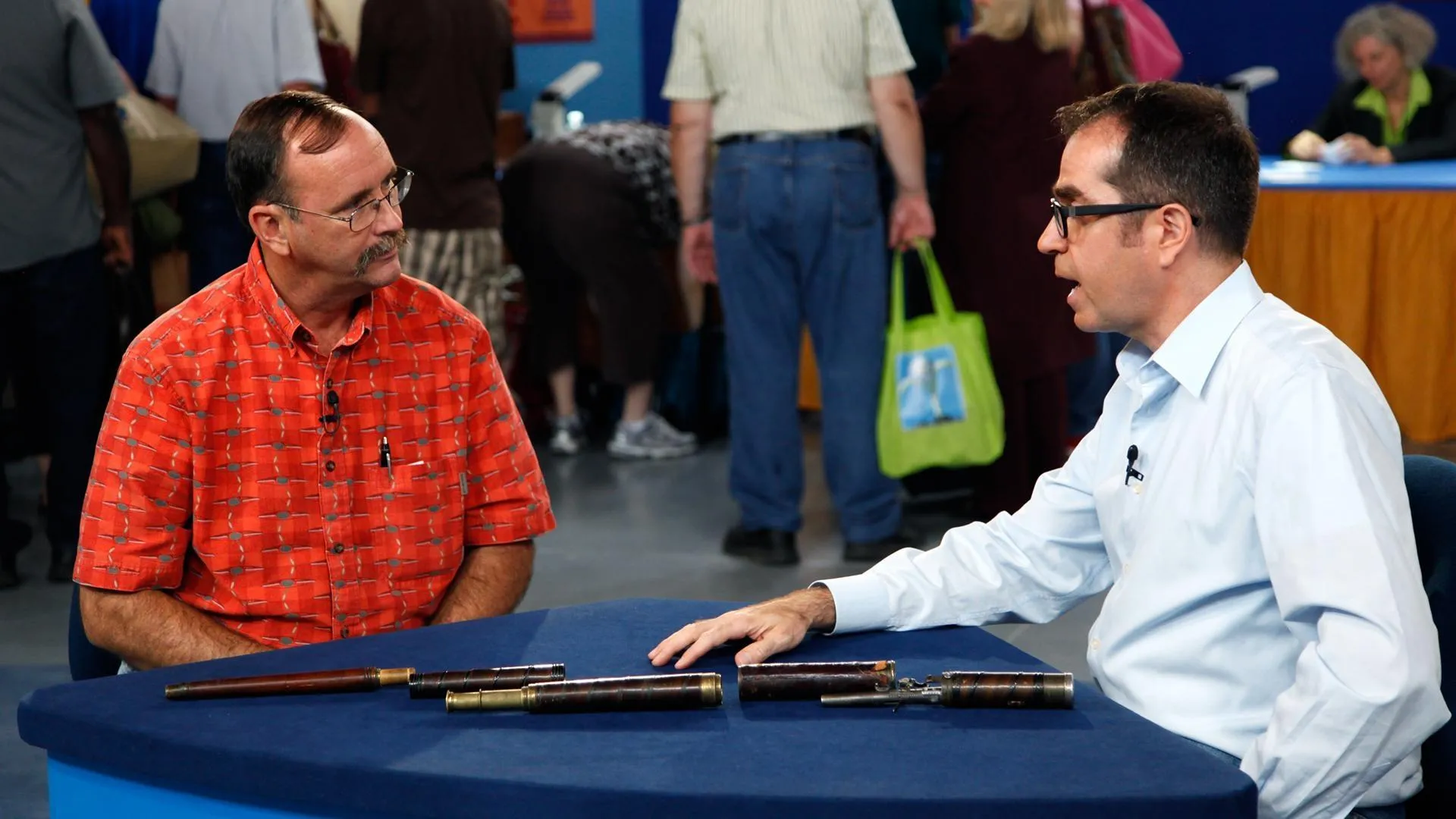HOST: When is an electric iron more than just a heat-producing appliance? When its design makes it hot enough to be on display at the Philbrook Museum of Art. This is a 1946 Silver Streak iron made of Pyrex glass and chrome-cast iron by Corning Glass and Saunders Machine and Tool Corporation. It came in colors such as red, blue, and this gorgeous green. At auction in 2011, one like this brought almost $1,000. Not bad for something meant to tackle such a tedious chore as ironing. More everyday household objects that were transformed into functional art by 20th-century industrial designers are out of storage and in the spotlight. So, Eric, let's start with this fascinating piece, I think it's a punch bowl, tell me more.
APPRAISER: It is a punch bowl, and it was designed by Russell Wright in 1935. It kind of looks like the sun and the planets revolving around it. Right, and it also looks like Saturn with its ring, and it turns it into a very functional thing because these punch cups are on this ring, and you can actually pick this up and serve it. And the use of the aluminum with a more traditional kind of walnut makes it a particularly exciting piece.
HOST: Were a lot of these made?
APPRAISER: I think a number of them were made, but the problem is that since it was a functional item and it was used, many of them got damaged and discarded, so the number that have survived can be limited. One recently in not very good condition, at auction, brought $2,000, but they have brought as much as $40,000.
HOST: Let's move to the next piece here, this radio. Tell me about this.
APPRAISER: This is a radio designed by Norman Bel Geddes, who was a leading American designer of the '30s, and it was made out of plastic, a plastic called Catalin, which is a successor to Bakelite, and these came in a range of colors. They could come in solid colors and in these wonderful multi-colors. There is a range. They can be $600 or $800. Some at auction have brought as much as $5,000 and $6,000.
HOST: Is color what drives that? Is that a big factor?
APPRAISER: Basically color and condition, again.
HOST: So what we're looking for, the multi-color radios, are probably more valuable than the solid?
APPRAISER: Exactly, exactly.
HOST: And finally we'll move over to this teapot, I'm guessing.
APPRAISER: Mm-hmm.
HOST: And tell me about this.
APPRAISER: It's a wonderful teapot. It was designed by Paul Schreckengost, and it's made out of porcelain. And this is a particularly nice one because it has these chrome details.
HOST: I would imagine if you had a teapot similar to this without the chrome, it wouldn't be as valuable.
APPRAISER: Exactly, exactly.
HOST: It's always interesting to see the clash and marriage of different materials.
APPRAISER: Right, I mean, porcelain is a traditional material, it was done in the 17th, 18th century, and here is the 20th-century incarnation of the use of porcelain.
HOST: And this is a teapot, and yet the way it's designed it looked like if it needed to be at Mach one, it would be okay aerodynamically.
APPRAISER: Exactly, it has that streamlined design that's just wonderful, it has a simplified form that makes it particularly attractive.
HOST: And the value?
APPRAISER: It depends on which model it is. One with the chrome has brought as much as $40,000, and one at auction without the chrome brought $14,000 a couple of years ago.
HOST: Well, these are fascinating works of art and what I'm really excited about is these are just starting to emerge as the new antique, I guess, and we can still find them.
APPRAISER: That's right, it's a great collecting field and it's attracted a new generation of young collectors.
HOST: I may be one of them, I don't know if I'm so young, but I'm young as far as how long I've been collecting. Thank you, Eric.
APPRAISER: You're welcome.











